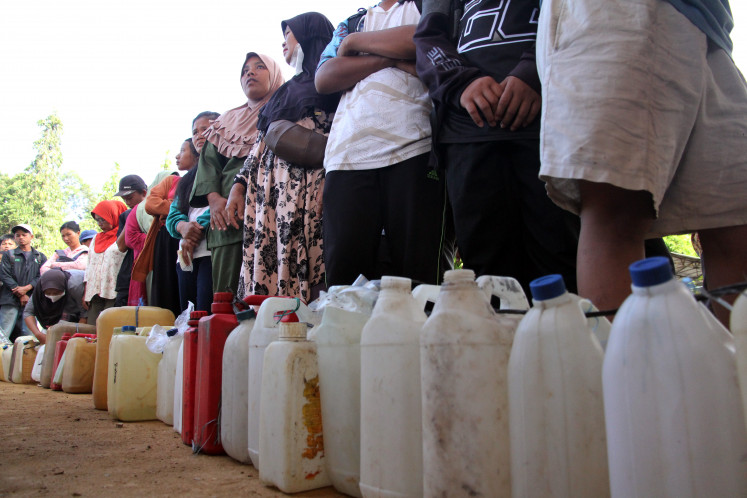Popular Reads
Top Results
Can't find what you're looking for?
View all search resultsPopular Reads
Top Results
Can't find what you're looking for?
View all search resultsAnalysis: Poultry sector: Hatching golden eggs
Indonesiaâs poultry sector may well be a major beneficiary of the new government, which is expected to introduce plenty of initiatives to bolster low-to-medium income earners
Change text size
Gift Premium Articles
to Anyone
I
ndonesia's poultry sector may well be a major beneficiary of the new government, which is expected to introduce plenty of initiatives to bolster low-to-medium income earners. This should bode well for the country's medium-term chicken consumption, which is currently at a low 7.6 kg/capita/year.
We note that Indonesia, with its predominantly Muslim population (no-pork diet), has higher growth potential as our country's middle-income earners are projected to increase to 141 million by 2020 from 74 million in 2012, backed by a huge base of productive-age consumers. Furthermore, poultry products have the cheapest protein content per kilogram. Thus, we believe that domestic poultry growth will remain robust in the foreseeable future.
Our economist expects the rupiah US dollar rate to remain relatively stable below the Rp 11,950 per dollar level in 2014-16. Additionally, the price of corn has dropped to Rp 40,202 per bushel, down 20 percent year-to-date (y-t-d), 30 percent year on year (y-o-y). (exhibit 1)
Similarly, the soybean oil price has also dipped to a low of Rp 3,795 per pound, down 19 percent y-t-d, down 22 percent y-o-y, (exhibit 2). Going forward, we expect corn and soybean oil prices to remain under pressure as favorable weather should allow for abundant supplies of corn and soybean. While the companies under our coverage expect a three-to-six-month time-lag for gross margin expansions, results in the first half of 2014 have remained depressed as the weak rupiah offset the positive impact of soft raw-material prices and higher sales discounts due to a jump in feed-mill production capacity. We expect future cost pressures to ease as we forecast a stable rupiah ahead.

To deal with the rupiah depreciation, poultry companies under our coverage have implemented feed mill average selling prices (ASPs) that average 7-9 percent higher y-t-d. Going forward, we expect poultry companies to continue increasing their ASPs to regain margins. We expect some margin recovery in the third quarter 2014, and a more solid one in the fourth quarter in the year.
In order to stabilize broiler prices post the Idul Fitri festivities, the government is attempting to reduce the domestic DOC (day-old chicks) supply by 7.5 percent as it remains unprofitable (DOC ASP: Rp 3,000/DOC; average DOC cost: Rp 4,200/DOC).
With the reduction in supply, we believe DOC prices should rise, leading to higher chicken broiler prices as well. We assume an average 2015 DOC price of Rp 5,000/DOC, up 12 percent y-o-y. We expect large players to maintain their DOC sales volumes as they have recurring customers ' chicken farmers ' with bundled feed-mill packages.
Due to growing concerns over the use of expired chicken meat imported from China, Japan will likely start importing chicken meat from Indonesia for the first time since 2004. This is expected to start by the end of 2014 with processed chicken meat to be imported first.
According to Bloomberg Intelligence, Japan accounts for 9.7 percent of total global imports of broiler meat (exhibit 5). The exports to Japan should provide higher and more stable margins from the higher processed chicken sales. Note that the Japfa group does not consolidate its processed chicken business under the listed company in Indonesia.

Thus, this move by Japan will mostly benefit Charoen Pokphand Indonesia (CPIN), whose processed chicken meat sales account for 9 percent of total sales in the first half, this year and which had the highest share (66 percent) of the processed chicken meat market in 2013 (exhibit 3).
In conclusion, with likely strong demand ahead allowing for higher ASPs, a stable rupiah/dollar exchange rate and raw materials prices likely to remain subdued, we have an overweight stance on the sector as we see a positive risk-reward scenario at this stage of the cycle.
____________________
The writer is an analyst at the research department of PT Bahana Securities.










